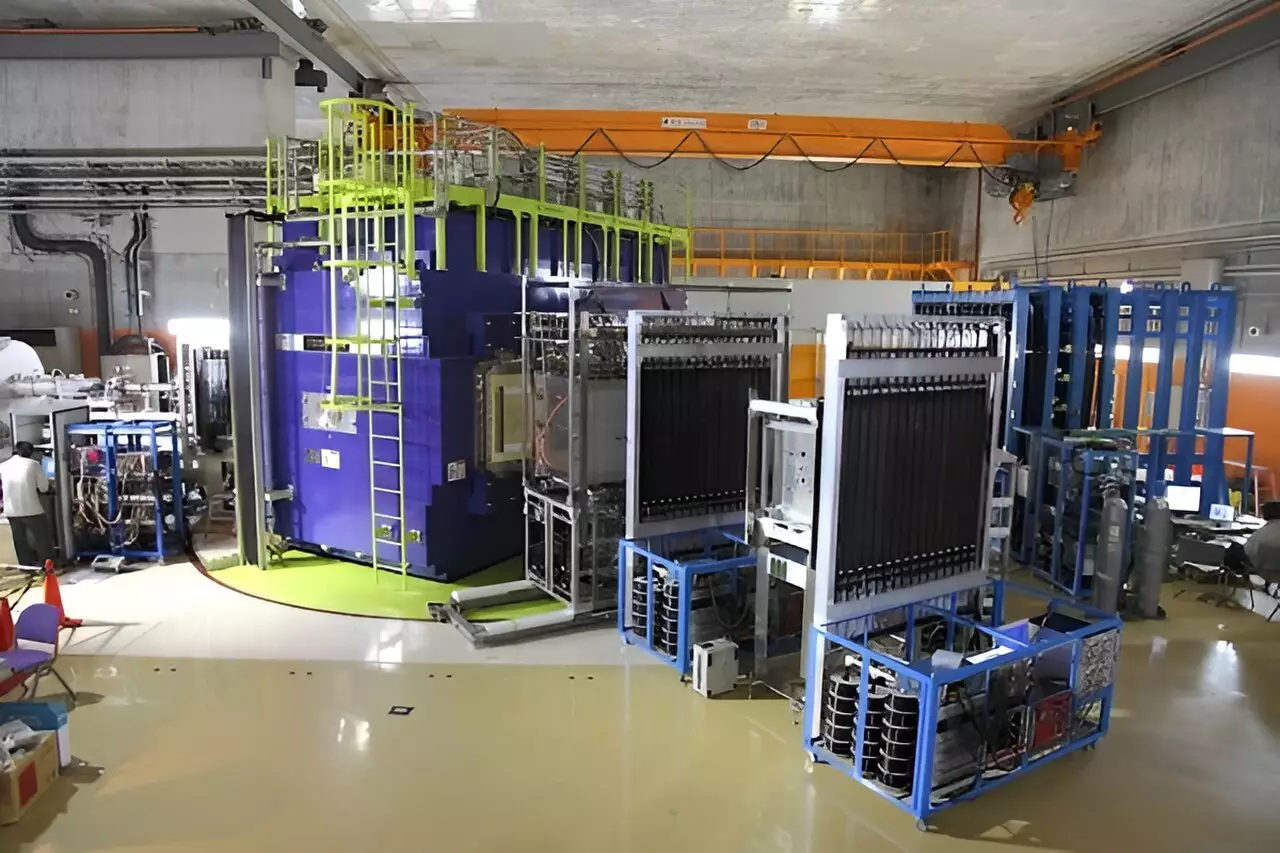Recent advances in nuclear physics have produced exciting developments with the detection of the fluorine isotope known as 30F. Research conducted by the SAMURAI spectrometer at RIKEN’s RI Beam Factory in Japan has made this remarkable discovery, opening new avenues for exploring the rare and intriguing structures of atomic nuclei. This finding not only enriches our understanding of nuclear physics but also presents a unique opportunity to challenge existing theoretical frameworks, unveil unexpected phenomena, and extend our comprehension of the limits of nuclear matter.
The groundbreaking work was undertaken by the SAMURAI21-NeuLAND Collaboration, a diverse consortium of over 80 researchers from institutions such as GSI-FAIR and TU Darmstadt in Germany, as well as various facilities across the globe. Their primary objective was to study the mass and neutron separation energy of the newly identified 30F isotope, which exists only briefly before decaying. Julian Kahlbow, one of the leading authors of the study, emphasized the importance of their work as they pushed the boundaries of nuclear research to explore neutron-rich isotopes that challenge our understanding of basic nuclear structure and behavior.
The Concept of ‘Magic Numbers’ in Nuclear Structure
The study of nuclear structure often revolves around the idea of ‘magic numbers’—specific neutron and proton counts that lead to particularly stable configurations. At N=20, it is assumed there is a significant energy gap that contributes to this stability. However, the researchers noted a critical breakdown of this paradigm when approaching the neutron-rich fluorine isotopes, including 30F. This breakdown manifests in phenomena such as the “Island of Inversion,” where traditional notions of nuclear stability become complicated by the interactions in isotopes such as 28O, prompting researchers to rethink the very fundamentals of nuclear matter.
A significant challenge in studying 30F arises from its transient existence of only about 10-20 seconds, complicating direct measurements. To overcome this limitation, Kahlbow and his team relied on an innovative approach that involved analyzing decay products. By generating a beam of 31Ne at high speeds, the researchers could induce the production of 30F, which subsequently decayed into 29F and a neutron. They effectively reconstructed the characteristics of the elusive 30F nucleus by precisely measuring the outcomes of this decay, utilizing advanced detectors that were intricately designed for capturing fleeting moments in nuclear interactions.
Among the most intriguing implications of their results was the hypothesis that the isotopes 29F and 28O may exist in a superfluid state. This phenomenon represents a rare condition in nuclear physics, where neutrons can pair up and maintain their coherence amidst other particles. Kahlbow indicated that the results suggested a shift in our understanding of nuclear interactions, hinting at a new regime where neutrons transition from distant orbits to pairing configurations reminiscent of Bose-Einstein condensates.
Broader Impacts and Future Directions
The implications of these discoveries reach beyond mere academic curiosity; they could significantly influence theoretical models underpinning neutron stars and the behavior of matter at extreme densities. By establishing the presence of a superfluid regime in weakly bound systems, researchers could enrich the theoretical landscape that governs not only the structure of atomic nuclei but potentially the fabric of matter in the cosmos. Future research is likely to focus on investigating neutron correlations and further characterizing superfluidity in other isotopes surrounding the 30F nucleus.
In addition to enhancing our understanding of the interactions between neutrons in nuclear matter, the study of halo nuclei—where neutrons exist far from the nuclear core—has also gained attention. By conducting further experiments, researchers expect to uncover more secrets hidden within the intricate confines of neutron-rich isotopes, such as those within the fluorine isotopic chain.
The detection of 30F represents a significant achievement in nuclear physics and hints at richer, more nuanced structures within atomic nuclei than previously understood. The groundbreaking findings by the SAMURAI21/NeuLAND collaboration not only shed light on the unusual behavior of neutron-rich isotopes but also raise essential questions about the fundamental principles guiding nuclear interactions. As research progresses, the potential to unravel the surprising architectures of matter at the edge of stability opens up an exciting new chapter in our quest to understand the building blocks of the universe. The journey into the realms of nuclear exploration promises to yield unexpected discoveries that could reshape our understanding of physics for generations to come.

